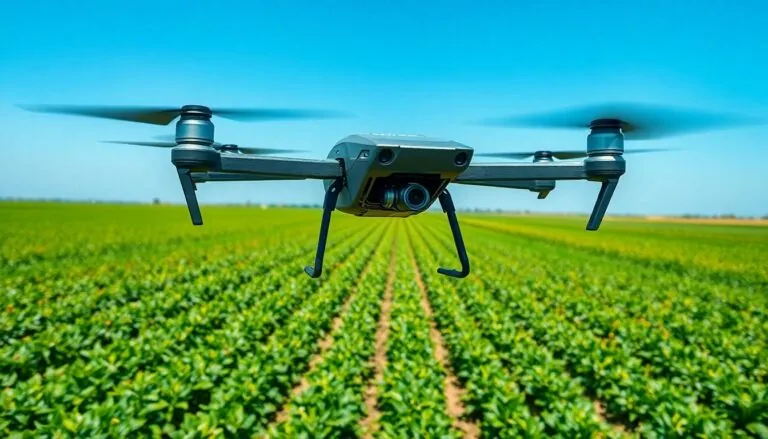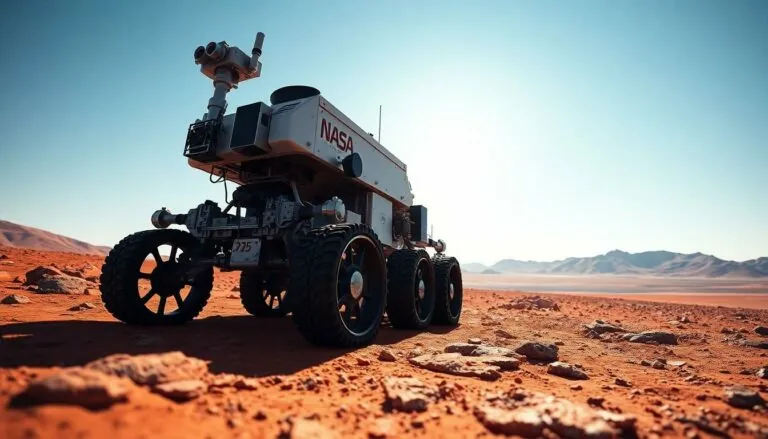Table of Contents
ToggleIn a world where Wi-Fi signals can barely reach the backyard, the space-based RF and microwave technology market is blasting off into a new frontier. Imagine satellites zipping around the Earth, beaming down data faster than you can say “intergalactic internet.” This isn’t just science fiction; it’s the cutting-edge tech that’s transforming how we communicate, navigate, and even explore the cosmos.
As demand for high-speed connectivity skyrockets, the market for these technologies is heating up. From military applications to commercial ventures, the potential is as vast as space itself. So buckle up, because the journey through this electrifying market is about to take off, and it promises to be a wild ride filled with innovation and opportunity. Who knew that the future of communication could be so… out of this world?
Overview of Space Based RF and Microwave Technology Market
The space-based RF and microwave technology market experiences rapid growth due to increasing demand for satellite communication. Forecasts project a market value of approximately $52 billion by 2025, influenced by advancements in miniaturization and technology efficiency. Enhanced satellite systems provide critical infrastructure for global connectivity.
Military applications dominate initial investments in this domain, emphasizing surveillance and reconnaissance capabilities. However, commercial usage is expanding significantly, offering services in broadcasting, internet access, and remote sensing.
Innovations in high-frequency systems contribute to improved data transmission rates, enabling real-time communication for various industries. Companies are pursuing partnerships to develop next-generation satellite networks that support diverse applications, including Internet of Things connectivity.
Geopolitical factors also drive government spending in this field, as nations prioritize secure communication networks. Increased funding leads to technological advancements, creating competitive market dynamics.
Significant players in the market include Boeing, Lockheed Martin, and Northrop Grumman, focusing on developing advanced RF systems. Research initiatives initiated by these firms aim to enhance signal processing and reduce interference, promoting clearer communication.
Investments in space-based technology are vital for an interconnected future, impacting sectors like telecommunications, education, and healthcare. As more entities recognize the significance of expanding their capabilities, ongoing innovation will shape the landscape of communication, paving the way for a more integrated global economy.
Key Technologies in Space Based RF and Microwave

Space-based RF and microwave technologies play a vital role in modern communications and navigation. Innovations in this sector continue to evolve, offering enhanced capabilities and applications across various industries.
Types of RF Technologies
Numerous RF technologies contribute to satellite communication systems. Active and passive antennas are crucial for receiving and transmitting signals. Transponders also enable signal relay, facilitating communication between satellites and ground stations. Software-defined radio (SDR) systems provide flexible and programmable functionality, allowing customization based on mission requirements. Additionally, phased array antennas enhance performance by steering beams electronically, optimizing signal direction and strength. These technologies collectively enhance the reliability and efficiency of space-based communication systems.
Types of Microwave Technologies
Several microwave technologies are essential for effective satellite operations. High-power amplifiers improve the strength of transmitted signals and ensure clear communication. Frequency converters play a significant role in downlinking signals to ground stations while maintaining high fidelity. Furthermore, low-noise block (LNB) converters reduce noise in signal reception, enhancing overall clarity. Beamforming techniques also contribute by focusing energy in specific directions, maximizing the efficiency of signal transmission. These advancements in microwave technologies support the growing demands of the space-based RF and microwave technology market.
Applications of Space Based RF and Microwave Technology
Space-based RF and microwave technology has a wide range of applications that significantly impact various sectors. These applications enhance communication, improve observation capabilities, and support scientific research.
Communication Systems
Communication systems rely heavily on space-based RF and microwave technology for effective data relay. Satellite systems facilitate global broadband access, allowing users to connect from remote areas. Businesses benefit from reliable communication links that enhance operations. Furthermore, military organizations utilize secure satellite communications for strategic purposes. Innovations in software-defined radio (SDR) technology also offer flexibility in adapting to evolving communication standards.
Earth Observation
Earth observation applications are essential for monitoring environmental changes and managing resources. Satellites equipped with RF and microwave sensors gather data on weather patterns, land use, and natural disasters. These technologies assist in agricultural planning and disaster response initiatives. Governments and organizations leverage this data to make informed decisions about resource management and urban development. Moreover, advancements in satellite imaging enhance resolution and accuracy, further supporting these efforts.
Scientific Research
Scientific research benefits greatly from space-based RF and microwave technology. Researchers utilize this technology to study planetary atmospheres and surface conditions. Observations from satellites contribute to studies of climate change and its impact on ecosystems. Data collected aids scientists in understanding celestial phenomena and earth sciences. Collaborative international efforts in space missions enable the sharing of valuable information across disciplines, fostering innovation and discovery.
Market Trends and Growth Drivers
A notable trend in the space-based RF and microwave technology market is the increasing emphasis on high-speed connectivity. This focus on improved connectivity fuels rapid advancements across various sectors, including military and commercial applications. Companies are prioritizing miniaturization and efficiency in devices to meet the rising demand for enhanced data transmission rates.
Investment growth remains prominent, particularly in military surveillance and reconnaissance initiatives. Government spending reflects a strategic approach to secure communication networks, prompting funding increases for technological innovations. These investments by key players, like Boeing and Lockheed Martin, significantly shape market dynamics, driving competitive advancements.
Moreover, commercial applications diversify continually. The expansion of services in broadcasting, internet access, and remote sensing enhances market opportunities. Notably, high-frequency systems play a vital role in meeting the communication demands of various industries, facilitating real-time data transfer and communication across platforms.
Innovations in RF technologies, such as active and passive antennas, underpin this progress. These advancements significantly enhance the reliability and efficiency of satellite communication systems. Specific microwave technologies, including high-power amplifiers and frequency converters, support the infrastructure necessary for sustained market growth.
Rising geopolitical tensions contribute to growth drivers as nations invest heavily in secure communication technologies. Strategic collaborations and partnerships further accelerate advancements, enabling companies to leverage synergies and enhance technological capabilities. This collaborative approach positions the market for continued expansion, with an projected value nearing $52 billion by 2025.
Challenges and Opportunities in the Market
Challenges and opportunities continue to shape the space-based RF and microwave technology market. Advanced technologies face hurdles such as regulatory compliance and spectrum allocation, essential for successful operations. These challenges create potential delays and increase costs for organizations seeking to launch and maintain satellite systems.
Competition drives innovation, presenting both an obstacle and a chance for growth. As established aerospace firms invest in research and development, new entrants also emerge, intensifying the race for advanced technologies. Rapid advancements in miniaturization provide opportunities for companies to create cost-effective solutions, increasing accessibility in the market.
Global collaboration enhances opportunities, yet geopolitical tensions pose risks. Countries prioritize secure communications, which leads to increased defense spending. As a result, market dynamics shift, transforming competition into opportunities for firms with specialized technologies in demand.
Investment trends highlight a focus on military applications, particularly in surveillance and reconnaissance. Commercial sectors, however, show growth in internet access and remote sensing. Significant funds are flowing into these areas, suggesting a promising landscape for diverse applications.
Technological convergence amplifies prospects for innovation. Advancements in artificial intelligence and machine learning pair well with RF systems, improving signal processing and data analysis. As industries adopt these innovations, opportunities for efficiency and performance boost market value.
Environmental concerns also drive demand for satellite technology in earth observation. Monitoring climate change and natural resource management fall under these applications, emphasizing the social responsibility of firms in this sector. The commitment to sustainable practices increases the attractiveness of the market to investors.
Understanding these challenges and opportunities helps stakeholders navigate the evolving landscape. As the market continues to grow towards an estimated $52 billion by 2025, strategic investments and collaborations will shape the future of space-based RF and microwave technology.
The space-based RF and microwave technology market is on the brink of transformation. As demand for high-speed connectivity surges across military and commercial sectors, significant advancements are anticipated. Innovations in RF and microwave systems will enhance communication capabilities and foster new applications that address global challenges.
Investment trends indicate a robust future, with key players driving technological developments. While challenges like regulatory compliance and geopolitical tensions exist, they also present opportunities for growth and collaboration. The journey ahead promises to be dynamic, positioning this market as a cornerstone of modern communication and navigation solutions. Stakeholders must stay agile to navigate the evolving landscape and seize emerging possibilities.




